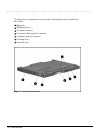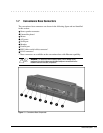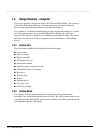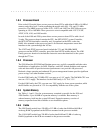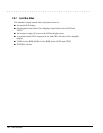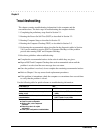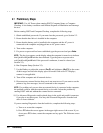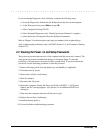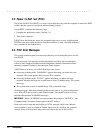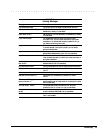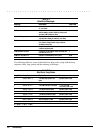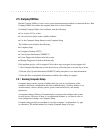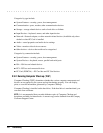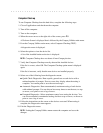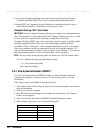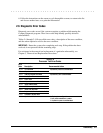
. . . . . . . . . . . . . . . . . . . . . . . . . . . . . . . . . . . . .
2-4 Troubleshooting
2.3 Power-On Self Test (POST)
The Power-On Self-Test (POST) is a series of tests that run every time the computer is turned on. POST
verifies that the system is configured and functioning properly
To run POST, complete the following steps:
1. Complete the preliminary steps. (Section 2.1).
2. Turn on the computer.
If POST does not detect any errors, the computer beeps once or twice to indicate that
POST has run successfully and boots from the hard drive or from a bootable diskette if
one is installed in the diskette drive.
2.4 POST Error Messages
This section contains typical error messages that may occur during the power-on self-
test (POST).
If you receive an error message read the description and follow the recommended
action or run Computer Checkup from the Diagnostics diskette. Information about
running Computer Checkup is presented later in this chapter.
If POST detects an error, one of the following events occurs:
■
A message with the prefix "WARNING" appears informing you where the error
occurred. The system pauses until you press F1 to continue.
■
A message with the prefix "FATAL" appears informing you where the error
occurred. After the message, the system emits a series of audible beeps. The system
then stops.
■
The system emits a series of audible beeps. The system then stops.
Warning messages indicate a potential problem exists such as a system configuration
error. When F1 is pressed, the system should resume. You should be able to correct
problems that produce WARNING messages.
IMPORTANT: When a WARNING message includes the prompt to "RUN SCU," run
Computer Setup. (Computer Setup replaces the SCU utility.)
Fatal errors emit a beep and may display a FATAL message. Fatal errors indicate
severe problems, such as a hardware failure. Fatal errors do not allow the system to
resume. Some of the fatal error beep codes are listed at the end of this section.



